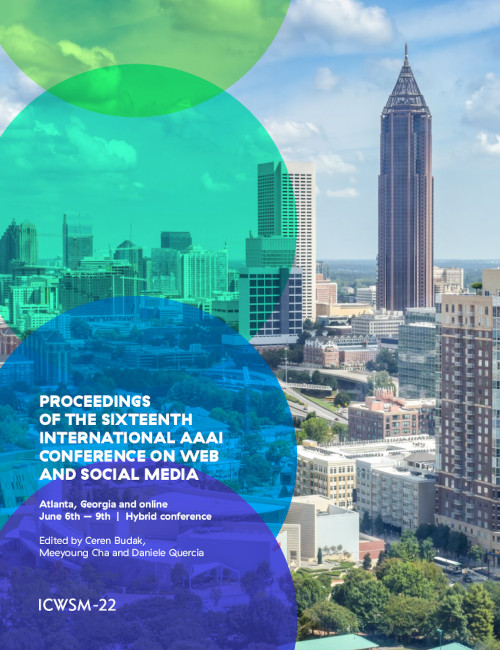The Contribution of Lyrics and Acoustics to Collaborative Understanding of Mood
DOI:
https://doi.org/10.1609/icwsm.v16i1.19326Keywords:
Text categorization; topic recognition; demographic/gender/age identification, Qualitative and quantitative studies of social media, Subjectivity in textual data; sentiment analysis; polarity/opinion identification and extraction, linguistic analyses of social media behaviorAbstract
In this work, we study the association between song lyrics and mood through a data-driven analysis. Our data set consists of nearly one million songs, with song-mood associations derived from user playlists on the Spotify streaming platform. We take advantage of state-of-the-art natural language processing models based on transformers to learn the association between the lyrics and moods. We find that a pretrained transformer-based language model in a zero-shot setting -- i.e., out of the box with no further training on our data -- is powerful for capturing song-mood associations. Moreover, we illustrate that training on song-mood associations results in a highly accurate model that predicts these associations for unseen songs. Furthermore, by comparing the prediction of a model using lyrics with one using acoustic features, we observe that the relative importance of lyrics for mood prediction in comparison with acoustics depends on the specific mood. Finally, we verify if the models are capturing the same information about lyrics and acoustics as humans through an annotation task where we obtain human judgments of mood-song relevance based on lyrics and acoustics.Downloads
Published
2022-05-31
How to Cite
Naseri, S., Reddy, S., Correia, J., Karlgren, J., & Jones, R. (2022). The Contribution of Lyrics and Acoustics to Collaborative Understanding of Mood. Proceedings of the International AAAI Conference on Web and Social Media, 16(1), 687-698. https://doi.org/10.1609/icwsm.v16i1.19326
Issue
Section
Full Papers

